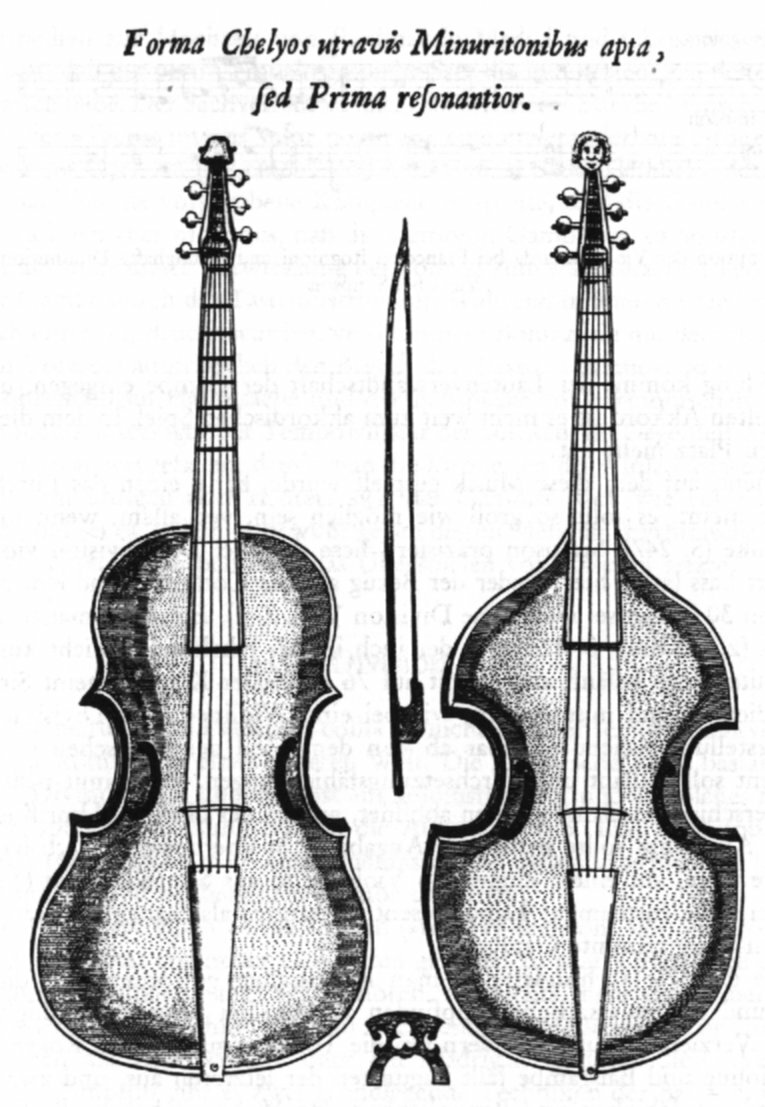Viols in the shape of the “classical” English viol
and in the shape of the violin

Christopher Simpson: The Division Violist (London, 1659 and 1667)
Christopher Simpson was one of the foremost exponents of the art of viol playing in the 17th C. His pedagogical publication for that instrument served all future generation. In fact, many foreigners – mainly from France and Germany- traveled to England to study with him. In his treatise, The Division Violist (1659 and 1667), a veritable monument of a work, filled with sound advice for players and makers alike, Simpson shows the two main types of viol shapes in use at the time: the one on the right, we may call the “classical” English viol; the other, on the left, we may call the “violin-shaped” viols.
It is important to realise that Simpson actually recommends the violin-shaped viol for solo playing: because of its sound.
Latin text: “sed Prima resonantior”: The first one sounds better.
English text: “The Sound should be quick and sprightly. like a Violin; and Viols of that shape (the Bellyes being digged out of the Plank) do commonly render such a Sound.”
This advice comes from the middle of the 17th C., at the zenith of the viol’s popularity. Indeed one encounters viols of this form in contemporary Dutch and Italian painting.